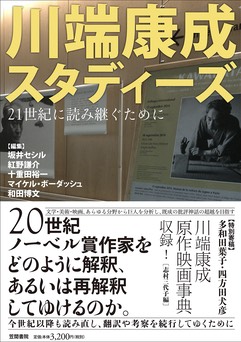
When I wrote my book on Kinugasa Teinosuke’s A Page of Madness, I devoted a number of pages to the Nobel Prize winner Kawabata Yasunari’s involvement in the project. Even though I in the end concluded that his involvement was not as great as some had seen, that did not mean that I thought his relation with that film or with cinema in general was insignificant. I had actually published an article in Iris some years before, entitled “Celluloid Masks,” that contrasted Kawabata’s connections to cinema to those of Tanizaki Junichiro, especially in their literature (you can read the full article here). But there was a lot more I could have written about.
I was thus quite pleased to get an invitation in 2014 to participate in a conference in Paris on Kawabata, hosted by Cécile Sakai. It was a great opportunity to revisit Kawabata and complicate the notion prevalent in the scholarship that particularly his early works were “cinematic.” But it was also an excellent chance to connect him to my larger project on the history of Japanese film theory, and explore the possibility of a film theory evoked in his writings, both fictional and non-fictional.
The research that came out of this re-engagement with Kawabata is going to appear in different forms in different languages. The longest version will appear in English at some time in a special issue of Japan Forum (it has been okayed for publication). The Japanese version, however, is already out in a book titled Kawabata Sutadīzu. And whereas the Japan Forum issue will only contain a handful of articles that came out of the conference, Kawabata Sutadīzu features many more. Volume, however, was achieved by sacrificing length, so mine is not the only piece in the anthology that had to be shortened.
Still, it is a wonderful introduction to the current state of Kawabata studies, featuring articles by Tawada Yoko, Cécile Sakai, Toeda Hirokazu, Michael Bourdaghs, Wada Hirofumi, Irmela Hijiya-Kirschnereit, and Kono Kensuke, among many others. Yomota Inuhiko and Shimura Miyoko, who did not take part in the conference, added extra pieces on Kawabata’s connections with cinema.
Here’s the bibliographic info:
- Aaron Gerow, “Kawabata to eiga: ‘Bungakuteki’ to ‘eigateki’ no kindai” 「川端と映画 「文学的」と「映画的」の近代」pp. 64–71.
- Kawabata Sutadīzu: 21-seiki ni yomitsugu tame ni 川端スタディーズ 21世紀に読み継ぐために
- Edited by Cécile Sakai 坂井セシル, Kono Kensuke 紅野謙介, Toeda Hirokazu 十重田裕一, Michael Bourdaghs マイケル・ボーダッシュ, Wada Hirofumi 和田博文
- Kasama Shoin 笠間書院, 2016. ISBN 978-4305708229
You can purchase it at Amazon Japan.
Update: The longer English version was published by Japan Forum. Find out about it here.

